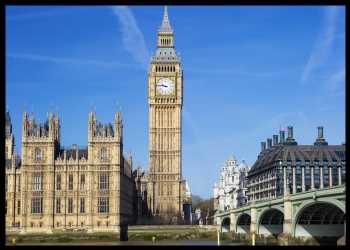The UK economic output stagnated in the third quarter as higher interest rates damped spending and investment, though the economy likely escaped a recession this year.
Gross domestic product posted nil growth in the third quarter after expanding 0.2 percent in the preceding period, data from the Office for National Statistics revealed. The result was better than the expected fall of 0.1 percent.
In output terms, there was a decrease of 0.1 percent in the services sector. The fall offset a 0.1 percent rise in construction.
At the same time, industrial output remained flat following a 0.5 percent drop in August. Output was forecast to gain 0.1 percent.
Manufacturing edged up 0.1 percent, in contrast to August’s 0.7 percent fall. Factory output was expected to climb 0.3 percent.
“High inflation is the single greatest barrier to economic growth – the best way to sustainably grow our economy right now is to stick to our plan and knock inflation back,” Chancellor Jeremy Hunt said.
“The Autumn Statement will focus on how we get the economy growing healthily again by unlocking investment, getting people back into work and reforming our public services so we can deliver the growth our country needs,” Hunt said.
The ONS said an increase in the volume of net trade was offset by falls in business investment, household spending and government consumption.
Household spending fell 0.4 percent in the third quarter largely reflecting lower spending on miscellaneous goods and services. Due to lower expenditure on health and education, government consumption shrunk 0.5 percent.
Gross fixed capital formation logged a monthly fall of 2.0 percent as business investment decreased 4.2 percent. Inventories increased by GBP 1.4 billion in the third quarter, following four quarters of destocking, data showed.
The trade deficit for goods and services was 0.7 percent of nominal gross domestic product.
On a yearly basis, growth in industrial production held steady at 1.5 percent and that in manufacturing output stayed at 3.0 percent.
GDP registered an annual growth of 0.6 percent in the third quarter. This was slightly faster than the forecast of 0.5 percent.
Monthly estimates showed that the economy expanded at a faster pace of 0.2 percent in September after a revised 0.1 percent gain in August, while output was forecast to stagnate.
ING economist James Smith said the most likely path for the economy is stagnation or very modest growth next year, though a recession cannot be ruled out.
The economist said the GDP figures are of limited consequence for the Bank of England and the bank will focus more on services inflation and wage growth figures. Smith expects the next move for Bank Rate to be down with cuts beginning next summer.
Another data from the ONS showed that the visible trade gap narrowed to GBP 14.29 billion from GBP 15.5 billion in August. At the same time, the surplus on services fell marginally to GBP 12.7 billion from GBP 12.8 billion a month ago.
As a result, the total trade deficit decreased to GBP 1.57 billion from GBP 2.69 billion in the previous month.
Source: Read Full Article

